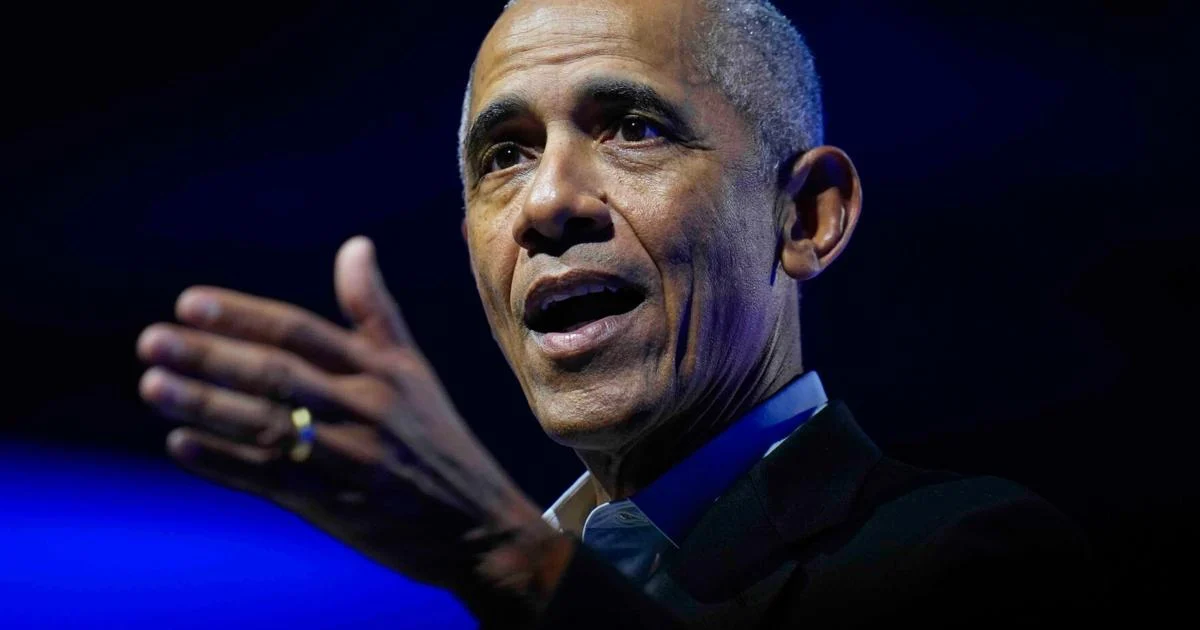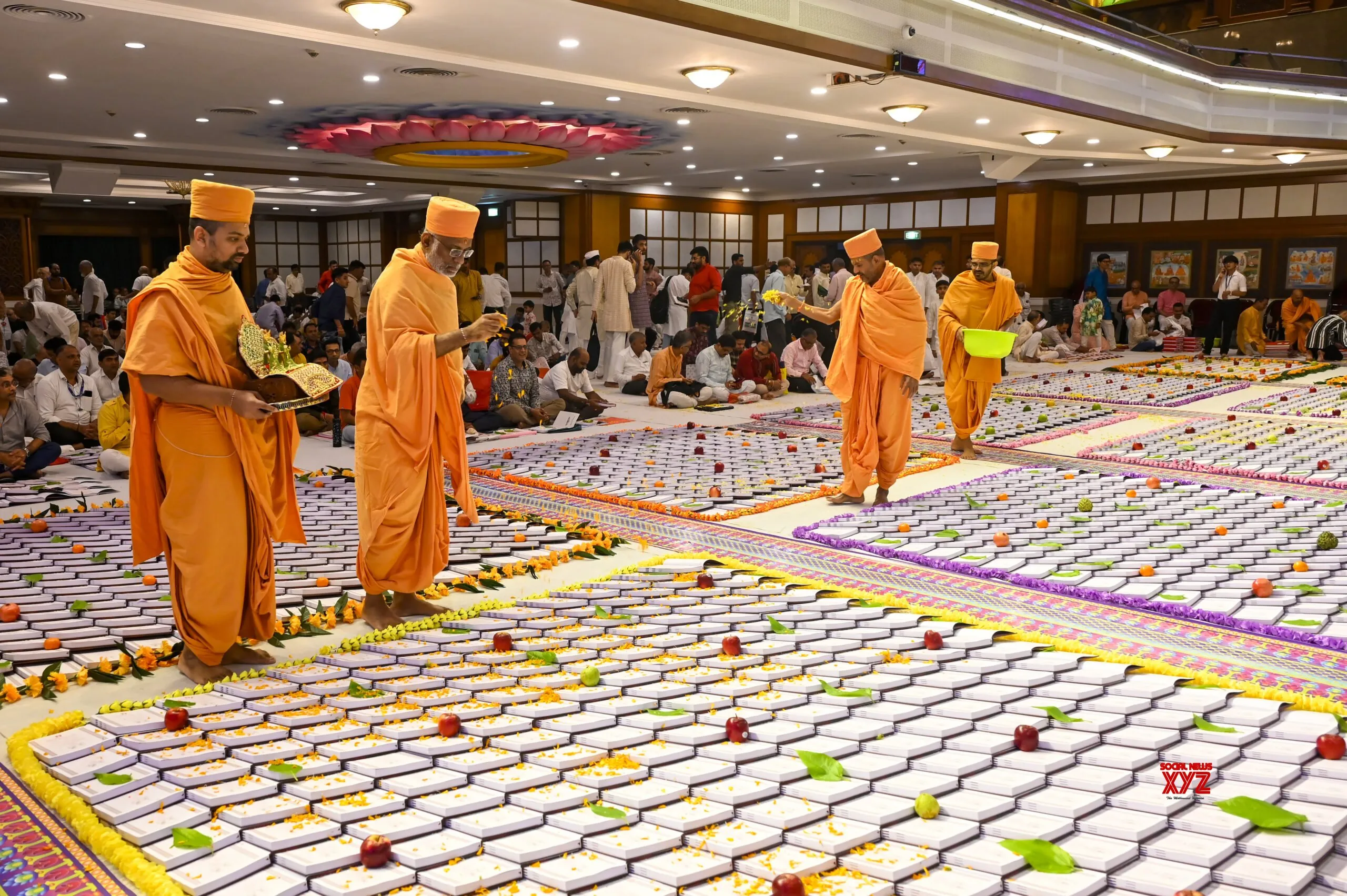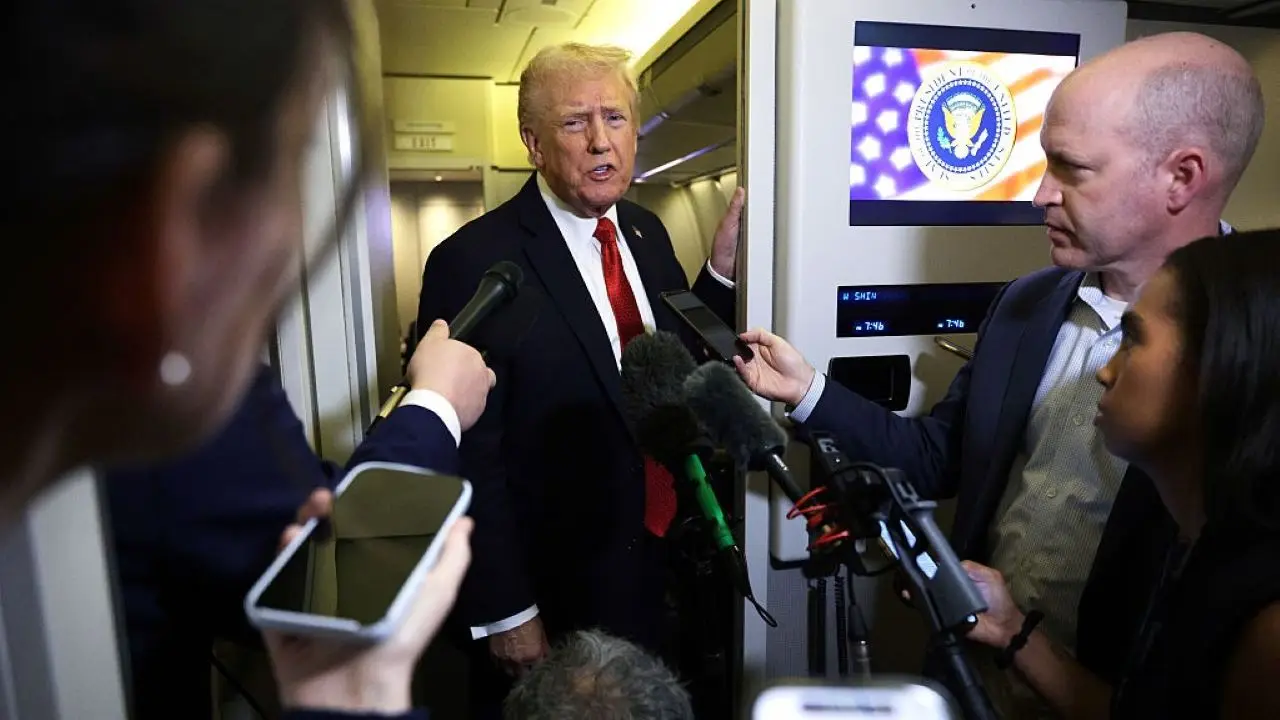Copyright forbes

NEW YORK, NEW YORK - OCTOBER 20: Costa Rica, Jamaica, Mexico and United States jerseys lay on a table before the FIFA Women's World Cup 2031 Bid Announcement Event on October 20, 2025 in New York City. (Photo by Howard Smith/ISI Photos/ISI Photos via Getty Images) ISI Photos via Getty Images NEW YORK - If the 1999 Women’s World Cup shattered the glass ceiling for female sports on this planet, then the 2031 competition could very put women’s soccer into a much higher orbit, an apogee that could only be dreamed of decades ago. For the first time, four countries are in line to co-host the most important women's stand-alone sporting event in the world, the Women's World Cup. The United States, Mexico, Costa Rica and Jamaica plan to submit a bid to FIFA to host the 48-team competition in November. During the announcement at the Solow Building in midtown Manhattan on Monday, U.S. Soccer Federation President Cindy Parlow Cone said its the four-team bid will be the only one submitted to FIFA. So, it looks pretty, pretty good that the four Concacaf countries will get the nod from soccer world governing organization. With FIFA expanding just about every World Cup these days, from youth to the men's and women's tournaments, any host would need many stadiums to hold the matches. FIFA has announced that the 2031 women's competition also would include a record 48 teams, just like next year's men's World Cup in Mexico, Canada and the U.S. So, U.S. Soccer, along with co-host Mexico, decided to pull out of the 2027 Women's World Cup to concentrate on 2031. Brazil will host that tournament in two years. This time, however, the Americans and Mexicans decided to up the ante and include Costa Rica and Jamaica. MORE FOR YOU The USA and Mexico are from North America, Costa Rica from Central America and Jamaica from the Caribbean. A true Concacaf World Cup! Soccer officials kept the details under their proverbial hat until Monday afternoon that Jamaica and Costa Rican would join in as co-hosts. NEW YORK, NEW YORK - OCTOBER 20: U.S. Soccer President Cindy Parlow Cone announces the host countries during the FIFA Women's World Cup 2031 Bid Announcement Event on October 20, 2025 in New York City. (Photo by Howard Smith/ISI Photos/ISI Photos via Getty Images) ISI Photos via Getty Images Equal to the men’s World Cup “This Women’s World Cup will be equal in every sense of the word to a men’s World Cup,” Parlow Cone said at a news conference, “not just in the number of teams and matches, but equal in the quality of the facilities, with the same type of travel, accommodations and support.” In a press release, Cone also stated: "Together, we have an extraordinary opportunity to host the biggest and most impactful Women's World Cup in history, one that will inspire a new generation of fans and help grow the women's game across our entire region and around the world. We're excited to drive lasting progress for women's soccer by creating a legacy that reaches far beyond 2031 and sets a new global standard for the sport." More than 30 cities have expressed interest in hosting games, according to Cone, who scored a key goal in a 2-0 U.S. victory at the 1999 Women's World Cup, which the Americans won in dramatic fashion. NEW YORK, NEW YORK - OCTOBER 20: Former United States player Kelley O'Hara answers a question as former Mexico player Andres Rodenbauch listens during a panel discussion during the FIFA Women's World Cup 2031 Bid Announcement Event on October 20, 2025 in New York City. (Photo by Howard Smith/ISI Photos/ISI Photos via Getty Images) ISI Photos via Getty Images ‘It’s nothing short of monumental’ To a pair of world champions, the U.S.'s Abby Wambach and Kelley O'Hara, the four-country bid was a no-brainer. "Man, I think it's nothing short of monumental," said O'Hara, a two-time world champion. "I was a kid of the 99ers generation. So, the first time I ever saw female athletes on television was the 1996 Olympics, It was hosted in Atlanta. Watched the gymnastics team. Then fast forward, three years later, 1990 World Cup. First time I saw women's soccer on television, and I watched that tournament, that final, the Brandi Chastain moment, and that moment truly changed my life forever. That's the reason I went on to be able to do the things that I was able to do on the field. But that was the catalyst, to be able to see that moment, and see female athletes at that level, the visibility, the exposure, the investment, all of that behind it in in this one tournament. "So, [26] years later, we have the potential to run it back and do it again. And the reality is, the game is in such a different place than it was in the 90s, but it still is just at the beginning. in my opinion, in this country, and for women's soccer. So, this tournament, has the ability to change the global landscape, but also the landscape for individuals, little girls, little boys, in all four of our countries, but also across the globe." When the USA hosted the 1999 Women's World Cup, which was expanded to 16 teams, 1.2 million spectators attended 32 games. NEW YORK, NEW YORK - OCTOBER 20: Former United States player Abby Wambach is interviewed before the FIFA Women's World Cup 2031 Bid Announcement Event on October 20, 2025 in New York City. (Photo by Howard Smith/ISI Photos/ISI Photos via Getty Images) ISI Photos via Getty Images ‘An opportunity for us to be in community’ Wambach, the U.S.'s all-time leading goalscorer (183) and world champion, felt rooting for a U.S. team, particularly a women's side is a good way to forget the hardship that is transpiring in this country. She remembered walking into Angel City's home venue, BMO Stadium, in Los Angeles earlier this National Women's Soccer League season. "Our country is going through quite a bit of turmoil right now since the election,” she said. “It was the first time I felt like I took a real breath. I've been like holding my breath. And that, for me, is what sport is. It's a place where we get to go, where we get to be in community with each other, regardless of who you voted for. We get to cheer on this thing. A World Cup, a world championship, a game, is an opportunity for us to be in community without having to talk about all of the politics. "Women in general, as they walk through the world is a political act. Women on a soccer field is even more of a political act, saying to the world, I deserve to be here. I think that our U.S. women's national team has fought so hard and for so long. In 1999 they didn't FIFA didn't believe that the team could play in big football stadiums, and the organizing committee and the players said, 'No, we can do this. We will figure out how to sell this thing out.' " Canada wasn't included in the bid because it hosted the 2015 Women's World Cup. The U.S. has hosted the competition twice before - in 1999 and in 2003 when China was forced to drop out due to the SARS epidemic. The Americans were brought in as last-minute hosts. China welcomed the world at the 2007 tournament. Hank Steinbrecher, General Secretary of the US Soccer Federation. (Photo by Graham Chadwick/EMPICS via Getty Images) PA Images via Getty Images The 1999 Women’s World Cup It's incredible how much things have changed over the past three decades. When U.S. Soccer placed its bid for the 1999 Women's World Cup, women's soccer faced a different global landscape. At that time, only two Women's World Cups were held until then - in China (1991) and Sweden (1995). With the USMNT on the rise - it had won the inaugural competition in 1991 and finished third four years later. The Americans struck gold at the very first women's Olympic soccer tournament in 1996. The U.S. made sure it was in the pole position. "Our tactic was to get every other country to pull out of the bidding process, so it could be only us," the late U.S. Soccer Secretary General Hank Steinbrecher said in a 2012 interview. "And, then we could pretty much do what we needed to do to get the World Cup done according to our vision, for a lot less money." In the late 1990's, Steinbrecher and U.S. Soccer president Alan I. Rothenberg traveled to a FIFA meeting in Sweden to promote the U.S. bid. "We pretty much eliminated all the competition," Steinbrecher said. "I just made a press announcement that the United States will host the Women's World Cup in 1999. And there's no one and no country is going to stop us from doing that." The strategy worked perfectly. "It pulled all the other countries away," Steinbrecher said. "We won that right to host, and there were no other bidders. So, I think our strategy worked, and it gave us a latitude in working with FIFA, where they weren't coming in and micromanaging everything we did." The U.S. boasted a pretty good track record with high-profile international soccer events. More than 1.3 million tickets were sold for the 1984 Olympic soccer tournament. The 1994 World Cup attracted 3.58 million fans, a record that still stands to this day. "Now we're going to set new standards for women," Steinbrecher said. "I think that plan worked." And then some. PASADENA, : Brandi Chastain of the US celebrates after kicking the winning penalty shot to win the 1999 Women's World Cup final against China 10 July 1999 at the Rose Bowl in Pasadena. The US won 5-4 on penalty kicks. (ELECTRONIC IMAGE) AFP PHOTO/Roberto SCHMIDT (Photo credit should read ROBERTO SCHMIDT/AFP via Getty Images) AFP via Getty Images Changing the landscape Almost three decades ago, FIFA desired smaller venues, such as high school and college stadiums. "FIFA wanted to just go to: ‘This is women's soccer, it'll never draw. Just go to small high schools, college stadiums. That's all we want. That's all we need,’ " Steinbrecher said. “It wasn't my vision. It was Alan's vision and perhaps Marla's [Messing, the president/CEO of the 1999 Women's World Cup] vision that said, no, we need to hold this in the best stadiums in the United States. We need to give credibility [to the women’s game]." In 1999, using larger stadiums were considered a gamble. The 1991 World Cup in China drew an average of 19,615 spectators per game. The 1995 competition in Sweden was showcased in smaller venues and averaged only 4,315 fans per match. Just imagine if FIFA got its way and hosted games in smaller venues. The growth of women's soccer, nationally and internationally, probably would have been greatly stunted. There would not have been a stunning crowd of 78,972 to watch the USA women defeat Denmark in the opening match at Giants Stadium or the record 90,185 spectators who filled the Rose Bowl to watch Briana Scurry made a vital penalty kick save and Brandi Chastain bury the winner before she pulled off her jersey in an iconic celebration for the ages after a grueling 120-minute duel of a scoreless draw in the summer sun of Southern California. And thanks to that tournament, the women's soccer landscape has changed dramatically. Today, two first division leagues are vying for attention in the states, with several lower divisions leagues as well. And now, women's soccer has another opportunity to boost its acceptance and popularity to another level, something that many of the game's pioneers could have only dreamed about. Editorial StandardsReprints & Permissions



